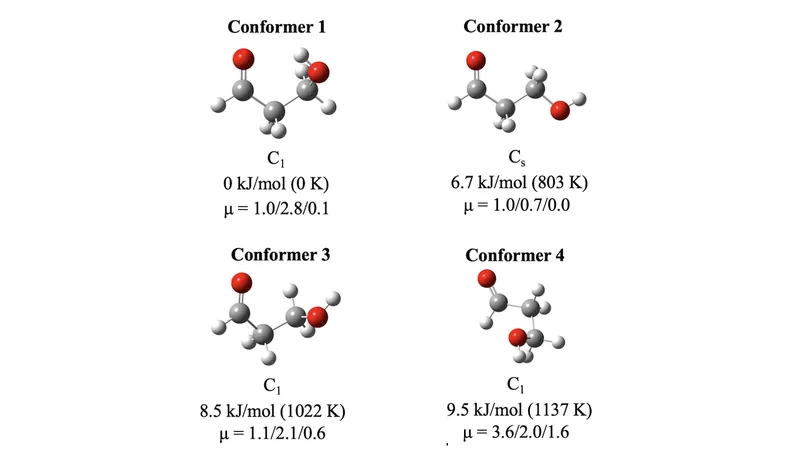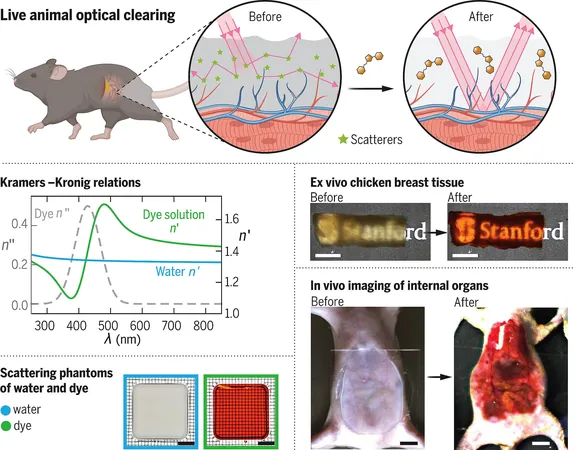
Revolutionizing Flu Vaccines: MIT's Game-Changing AI Tool!
2025-08-28
Author: Yu
The Annual Dilemma: Choosing the Right Flu Strains
Every year, global health experts face a daunting task: selecting the right influenza strains for the seasonal vaccine. This critical decision must be made months ahead of flu season, making it a high-stakes race against time. If the chosen strains align with those spreading in the population, the vaccine can offer robust protection. However, any missteps can mean a drop in effectiveness, leading to unnecessary illnesses and overwhelming healthcare systems.
Lessons from the Pandemic: The Urgent Need for Accuracy
The challenge of predicting effective vaccine strains became even more pronounced during the Covid-19 pandemic, where new variants often emerged just as vaccinations were being deployed. Similarly, influenza is a constantly mutating virus, making accurate predictions crucial and tough.
Enter VaxSeer: The AI That Can Change the Game
To tackle this uncertainty, a team at MIT’s Computer Science and Artificial Intelligence Laboratory (CSAIL) and the Abdul Latif Jameel Clinic for Machine Learning in Health has developed VaxSeer, an advanced AI system designed to predict dominant flu strains and pinpoint the most effective vaccine candidates well in advance. Utilizing deep learning models trained on decades of viral sequences and lab results, VaxSeer simulates flu virus evolution and vaccine responses.
Breaking the Mold: VaxSeer's Innovative Approach
Unlike traditional evolution models that examine single mutations, VaxSeer employs a large protein language model to analyze the relationship between strain dominance and the cumulative effects of mutations. Lead researcher Wenxian Shi states, "Our model adapts to the dynamic nature of influenza, offering a more precise tool for this rapidly evolving virus."
A Predictive Powerhouse: How VaxSeer Works
VaxSeer features two predictive engines: one assessing how likely each strain is to spread (dominance) and another gauging how effectively a vaccine will neutralize that strain (antigenicity). These combined insights generate a coverage score—indicating a vaccine’s anticipated performance against future flu strains.
Proven Success: VaxSeer vs. WHO Recommendations
In a comprehensive 10-year retrospective study, VaxSeer outperformed World Health Organization (WHO) recommendations for the A/H3N2 subtype nine out of ten times. For the A/H1N1 subtype, its predictions were equal to or better than the WHO's in six out of ten seasons, showcasing VaxSeer's impressive predictive capabilities.
Transforming Vaccine Development: The Future of VaxSeer
VaxSeer currently focuses on the flu virus's hemagglutinin protein, yet future iterations may enhance its capabilities by integrating additional viral proteins and various factors affecting vaccine efficacy. Researchers aim to expand its usage to other viruses, but this requires high-quality datasets to track viral evolution effectively.
A New Era of Predictive Modeling in Healthcare
Regina Barzilay, a prominent figure in AI and health at MIT, emphasizes, 'VaxSeer is designed to keep up with the rapid evolution of viruses.' Assistant Professor Jon Stokes highlights the broader implications of such predictive modeling, expressing hope for its application in forecasting antibiotic-resistant bacteria and drug-resistant cancers, providing a proactive approach to fighting future health crises.
The Future is Now: AI in Vaccine Development
With VaxSeer, health officials may soon gain a rigorous, AI-supported decision-making tool that could revolutionize how we approach vaccine development and keep us one step ahead in the ongoing battle against infectious diseases.



 Brasil (PT)
Brasil (PT)
 Canada (EN)
Canada (EN)
 Chile (ES)
Chile (ES)
 Česko (CS)
Česko (CS)
 대한민국 (KO)
대한민국 (KO)
 España (ES)
España (ES)
 France (FR)
France (FR)
 Hong Kong (EN)
Hong Kong (EN)
 Italia (IT)
Italia (IT)
 日本 (JA)
日本 (JA)
 Magyarország (HU)
Magyarország (HU)
 Norge (NO)
Norge (NO)
 Polska (PL)
Polska (PL)
 Schweiz (DE)
Schweiz (DE)
 Singapore (EN)
Singapore (EN)
 Sverige (SV)
Sverige (SV)
 Suomi (FI)
Suomi (FI)
 Türkiye (TR)
Türkiye (TR)
 الإمارات العربية المتحدة (AR)
الإمارات العربية المتحدة (AR)